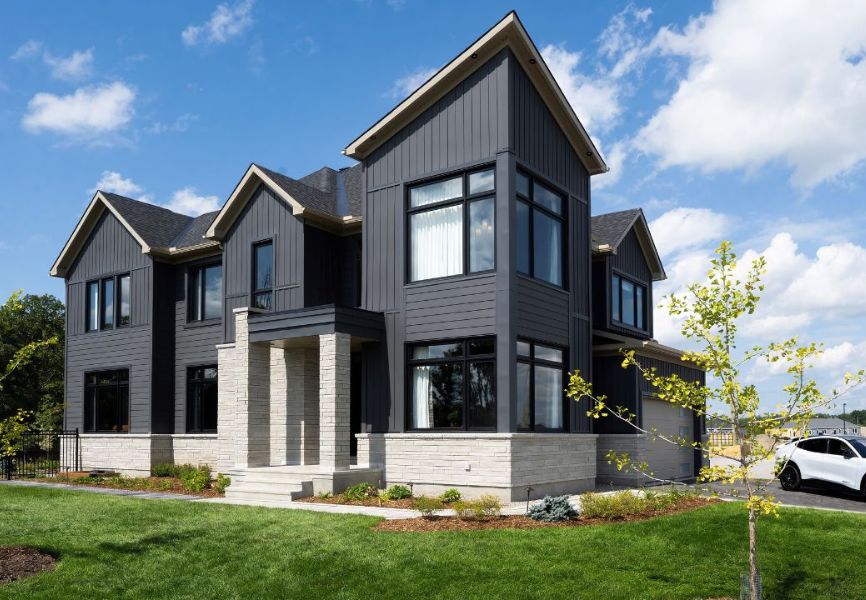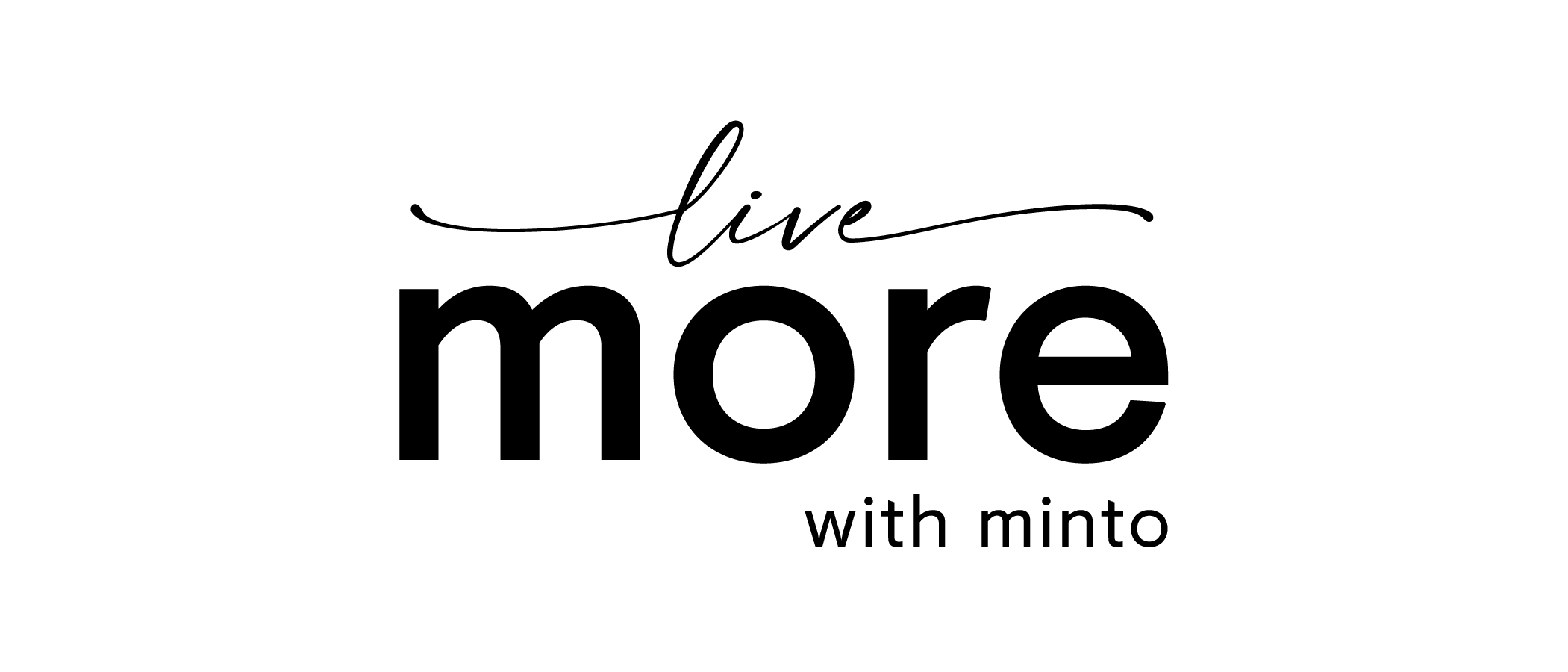Building Better Than Code: Minto’s Commitment to Excellence
At Minto, building better isn’t just a goal; it’s our mission.
As a leading homebuilder with nearly 70 years of experience and over 100,000 homes built, we strive to create homes that not only meet but exceed standard codes and regulations. To us, it’s about delivering more than expected — more quality, efficiency, sustainability, and innovation — because we believe our homeowners deserve healthy, vibrant living spaces.
In this blog post, we’ll explore the many ways Minto builds better than code. From our holistic approach to building a home to our ability to test and pioneer new cutting-edge technologies, we’ll look at how and why we strive to build better.
Understanding the Building Code
The Ontario Building Code (OBC) and National Building Code (NBC) are a set of regulations established by the Government of Ontario and Government of Canada to set standards for the construction and maintenance of buildings within the province and country respectively. It covers various aspects of building construction, including structural integrity, fire safety, accessibility, energy efficiency, plumbing, and electrical systems.
Overall, the building code plays a crucial role in regulating the construction industry, ensuring buildings are safe for homeowners. Compliance with the code is essential for builders to meet legal requirements, protect public safety, and deliver quality construction projects.
How Minto Builds Better Than Code
Understanding Where We Are Today
At Minto, all of our low-rise homes are energy-modelled by a third-party consultant (vendors vary in each region) that helps builders improve the quality, comfort, durability, and energy efficiency of homes across Canada.
Once a house is built, the consultant administers a blower door test to determine how airtight the house is. Much of building better than code is driven by our air-tightness, and so establishing best practices to ensure we’re consistently building to above-average air-tightness levels is key.
What is a Blower Door Test?
A blower door test measures the airtightness of a home, which plays a major role in its energy efficiency.
The procedure involves fitting a special fan into an exterior door frame of the home and temporarily sealing other openings, such as windows, doors, and vents. The fan then either pressurizes or depressurizes the building, causing air to flow through any leaks in the building envelope.
During the test, a technician monitors the airflow created by the fan and measures the pressure difference between the inside and outside of the building. This information is used to calculate the air exchange rate, which indicates how much air is leaking into or out of the building per unit of time. The results of the blower door test provide valuable data on the building’s overall airtightness and help identify areas where air leakage is occurring.
- Single Family Home: Minimum 2.5 air changes per hour
- Townhomes: Minimum 3 air changes per hour
Building Homes to a Higher Standard
Once we have an understanding of where we are today, it’s up to our site and trade teams to build a house that is as airtight as possible. While much of our ability to build better than code comes down to good building practices, attention to detail, and the fact that we’ve been building homes for nearly 70 years, there are two main reasons why we’re able to do this successfully:
- We leverage our CHEO Dream Homes and pilot projects as an opportunity to test cutting-edge technologies, products, and techniques that will help us build better than code.
- We take what we learn through our testing and implement it into our production homes.
Let’s take a closer look at how we do this in the following sections.
Leveraging our CHEO Dream Homes and Pilot Projects for Testing

Our annual CHEO Dream Home initiative serves as more than just a philanthropic endeavour; it’s also a platform for innovation. Each year, we use this opportunity to explore and experiment with innovative products and technology to enhance the energy efficiency and sustainability of our homes. Pilot projects, whether integrated in a presentation centre, model home or standalone production home are used in the same manner.
Over the years, we’ve explored and tested the use of:
- Geothermal heating
- A combination heating system
- Air-source heat pumps
- Various Panasonic products, including high-performing (and quieter) bathroom fans
- Premium Ecobee thermostats to manage indoor air quality
- Solar panels
- Battery energy storage solutions
Many of the above tests have been incorporated into our standard production homes or will be implemented in the coming years.
Implementing What We’ve Learned
Recognizing that even minor details can significantly impact a home’s energy efficiency and performance, a big part of transitioning from experimentation to implementation requires attention to detail and a commitment to excellence from our on-site teams and trades.
“Think of the expression, ‘Death by a thousand cuts.’ It’s the same idea with air tightness. If you have 1000 little holes, that’s going to impact your results. At the end of the day, paying attention to the little things — like cutting a round hole instead of a square hole for a round pipe — will significantly impact the air tightness in a home.” Justin Bouchard, Director, Estimating & Purchasing at The Minto Group
While we’ve tested and implemented many things into our production homes in our quest to build better than code, here are a few that have led to meaningful results:
- Prioritizing air tightness by implementing products such as spray foam and Aero Barrier, a water-based spray, to help seal the building envelope and prevent air leakage.
- Switching to more rental equipment (HVAC, for example) and leveraging our high volumes and long-standing relationships with suppliers to negotiate the best and most efficient equipment at a low rate for homeowners.
- Eliminating furnaces in all of our townhouse products.
Why Minto Strives to Build Better Than Code
Over the last 5-10 years, we shifted from a purely environmental approach to one of overall sustainability. Our strategy focuses on taking a holistic approach, including the following: operational carbon, embodied carbon, health & wellness, construction waste, climate resilience, and building a sense of community. We also look at indoor air quality and occupant comfort - all of which are important to building a better home.
We do this for three main reasons:
- We believe holding ourselves to a higher standard is the right thing to do. We don’t just do what is required by building codes, but what is required by our internal code. In 2023, Minto achieved an average of 14.53% better than code across all our communities and product types.
- We are laser-focused on our Environmental, Social, and Governance (ESG) strategy, and building better than code plays a key part in that.
- Our commitment to sustainability and our focus on doing more for people and the planet runs deep, and our mission to build better places for people to live, work, and play remains at the core of everything we do.
“We do things differently at Minto. It’s not just about building your standard box and moving on. We care about our homeowners and we want them to live better. We believe we have a responsibility to hold ourselves to a higher standard. That’s why we take a holistic approach to home building, looking at all the components that lead to a better home — from energy savings to indoor quality to occupant comfort. It’s why we choose to focus our efforts on building better than code.” – Justin Bouchard, Director, Estimating & Purchasing at The Minto Group
Building to a higher standard is more than meeting regulatory requirements; it's about embracing innovation, pushing boundaries, and prioritizing excellence in every aspect of home construction. Through ongoing experimentation, implementation of best practices, and a commitment to quality, we're reshaping the future of homebuilding in Canada, one exceptional home and community at a time.

